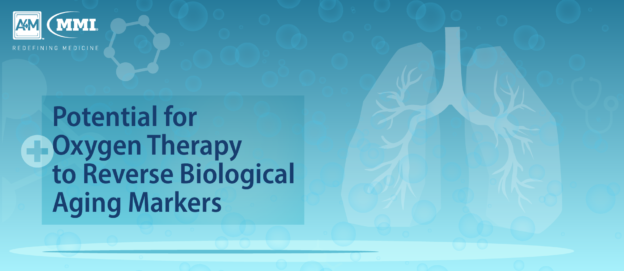Characterized by the progressive loss of physiological capacity resulting in impaired functioning and susceptibility to diseases, the biological aging process at a cellular level has two key hallmark elements: telomere length (TL) shortening and cellular senescence. A variety of therapeutic methods aimed at reversing or slowing down this process continues to be investigated while a novel treatment shows promise – a specialized form of oxygen therapy that may be able to reverse the aforementioned biological markers of aging.
In a new small study published in the Journal of Aging, researchers present potential breakthrough findings. Per their results, hyperbaric oxygen therapy (HBOT) may be an effective method for delaying or even reversing cellular degeneration as it was shown to lengthen telomeres and decrease levels of senescent cells, potentially helping prevent age-related illnesses such as cancer, diabetes, and dementia.
HBOT Effects on Aging Markers
Hyperbaric oxygen therapy has been used in the past for the treatment of a wide variety of health conditions, including carbon monoxide poisoning and decompression sickness. It has proven useful for scuba divers and astronauts who face hostile environmental conditions such as extreme pressure in deep ocean or outer space. A team of researchers tested whether its benefits can be extended to the biological aging process at a cellular level as well.
Led by Dr. Shai Efrati and colleagues at Tel Aviv University and Shamir Medical Center the latest study evaluated 30 healthy adults over the age of 65 who were treated with hyperbaric oxygen therapy. The team aimed to evaluate whether hyperbaric oxygen therapy affects TL and senescent cell concentrations in a normal, non-pathological aging adult population.
The study cohort received specialized oxygen therapy five days per week for a total duration of three months. As part of the treatment, participants spent 90 minutes inside of a compression chamber breathing 100% oxygen from a mask taking 5-minute breaks at regular intervals to breathe normal air.
The oxygen therapy used in this study differs from those available in clinics. Every 20 minutes participants removed their oxygen masks, prompting a quick decline to normal oxygen levels– an abrupt change which the body interprets as a sudden lack of oxygen resulting in a chain reaction.
Telomere Lengthening and Fewer Senescent Cells
In their findings, the researchers reported that specialized oxygen treatment improved two key markers of biological aging. After HBOT treatment, participants had significantly longer telomeres as well as a significant decrease in senescent cells revealing the possibility of aging reversal.
“For the first time in humans, we can see that we’re not only slowing decline, but the opposite — we can reverse it,” Dr. Efrati told Insider. “We see an elongation [of telomeres] of more than 20%, something that was considered impossible in humans.”
Next Steps
Dr. Efrati’s previous work has tested hyperbaric oxygen therapy for the treatment of cognitive issues and traumatic brain injury. Although many have been and remain skeptical of these experimental therapies, the latest findings show great promise in the field of regenerative medicine as the first evidence that human telomeres can be lengthened during clinical treatment. Further research is needed to better understand the meaning of these results for chronic illness and longevity as well as the therapies potential side effects.
“We need to see the long term effects, and to see if we can tailor the treatment for individuals to optimize the protocol,” Dr. Efrati said as he hopes to study the treatment in a larger population that includes people who are at risk of or in early stages of these diseases.
Closing in on the overall goal of treating the aging process as a preventable condition, the latest findings are a potential breakthrough for anti-aging research. However, the therapy is experimental, costly, and time-consuming; it is unlikely to reach the public soon as it requires extremely specialized equipment, resources, and a significant a time commitment. While it is promising, HBOT will not be a magical solution overriding important factors such as diet, exercise, and lifestyle habits that invariably play a role in biological aging.

